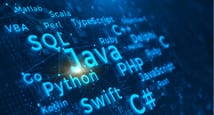- Course Introduction
SQL Certification Training Course
The online SQL Certification Training Course by SIMPLILEARN provides learners with an in-depth knowledge of the SQL ...Read more
Online
₹ 14990 19990
Quick Facts
| particular | details | |||
|---|---|---|---|---|
|
Medium of instructions
English
|
Mode of learning
Self study
|
Mode of Delivery
Video and Text Based
|
Course overview
SIMPLILEARN's SQL Certification Training programme will provide candidates with extensive knowledge of the SQL database, the structure of the database, various SQL statements, clauses, and how to manage the database in a growing industry. The course will also provide insight into how to integrate the database with the company's applications.
The candidates who enrol in the online SQL Certification Training course house an extensive curriculum with two hours of inside and out e-learning material. Additionally, the applicants taking up this course will have lifetime admittance to the e-learning materials. This course will also help students to upgrade their career development opportunities.
The SQL Certification Training Course is a self-paced learning programme that provides students with 24x7 assistance, and comprehensive coverage of all the SQL fundamentals, tools, and commands. SQL is an old database language; nevertheless, companies and industries still value it, making its professionals, sought-after employees.
Additionally, if the applicants want a certificate upon course completion, they will need to complete the online course up to 85%.
The highlights
- Self-paced course
- 100% Money-Back policy
- 4.7/5 rating by switch up
- Industry-recognized certification
- Paid course
- No prerequisites
- Employment benefits
- Certified trainers
- Lifetime access
- Case studies
- Online course
- Course certificate
Program offerings
- Online course
- Self-paced learning environment
- Course certificate
- Lifetime access to study material
Course and certificate fees
Fees information
- Candidates need to make a one-time payment of Rs. 14,990 to enrol in the course and access its content.
- Candidates can make the payment using the payment gateway, which has various options such as credit/debit, UPI, net banking. After SIMPLILEARN receives the payment, you will get access to the information via email.
Introduction to SQL certification training course fee structure
Course | Total fees in INR |
Self-paced | INR 14,990 |
*Students of this course can also opt for EMI and pay in instalments.
certificate availability
Yes
certificate providing authority
Simplilearn
Who it is for
SIMPLILEARN’s SQL Certification Training Course is beneficial for a lot of people, such as freshers who have just graduated, software developers, programmers. The course subject is related to anyone in the tech industry who wants to learn about databases and to integrate them into business applications.
Additionally, the programme will also benefit marketing and testing professionals, as well as salespeople, who are looking to understand their organization’s data in a more efficient way.
Eligibility criteria
There are no prerequisites for this online training; anyone who wishes to learn about the SQL database can enrol in this course. However, candidates who take up this course need to have some minimum system requirements such as a good internet connection, chrome browser, web camera, Headphones, or earphones. The SQL Certification Training Course by SIMPLILEARN is highly beneficial for software developers, programmers, and freshers.
This course can also be taken up by business professionals who want to know more about their organization's data ad on how to manage it effectively. Furthermore, if candidates wish to unlock the course certificate post-completion, they need to complete the programme curriculum up to 85%.
What you will learn
SIMPLILEARN’S SQL Certification Training Course programme will provide extensive knowledge about the following topics:
- SQL statements
- Transactional queries and control
- Relationship between different data
- Databases
- How to segregate data
- Group by clause
- Joins and tables
- Procedures and views
- Aggregate functions
- SQL commands and query tools
- Subqueries
- Back-up
- Restore
The syllabus
SQL Certification Course
Lesson 01: Course Introduction
Lesson 02: Introduction to SQL
2.01 Introduction
2.02 Introduction to Databases
2.03 Introduction to Database Management System
2.04 DBMS vs. RDBMS
2.05 Introduction to MySQL
2.06 Tables in My SQL
2.07 Relationships in MySQL
2.08 Views in My SQL
2.09 Table vs. Views
2.10 Quick Recap
Lesson 03: Database Normalization and Entity Relationship (ER) Model
3.01 Introduction
3.02 Entity Relationship Model
3.03 Attributes
3.04 Relationship Set and Degree
3.05 Types Of Relationship
3.06 Mapping Cardinalities
3.07 Database Normalization
3.08 Types of Anomalies
3.09 Types of Normalization
3.10 Types of Normalization: One NF, Two NF, and Three NF
3.11 Types of Normalization: BCNF, Four NF, and Five NF
3.12 Recap
Lesson 04: MySQL - Installation and SetUp
4.01 Introduction
4.02 Downloading MySQL Community Setup
4.03 Installing MySQL Community
4.04 Configuring MySQL Community and Workbench
4.05 Connecting to MySQL Server4.06 Downloading Sample MySQL Database in MySQL Workbench
4.07 Recap
Lesson 05: Working with Database and Tables
5.01 Introduction
5.02 Database Manipulation in MySQL
5.03 Transactions and ACID Properties in MySQL
5.04 MySQL Storage Engines
5.05 Creating and Managing Tables in MySQL
5.06 Creating and Managing Tables in MySQL: CREATE, DESCRIBE, and SHOW Table
5.07 Creating and Managing Tables in My SQL: ALTER, TRUNCATE, and DROP Tables
5.08 Inserting and Querying Data in Tables
5.09 Filtering Data From Tables in MySQL
5.10 Filtering Data From Tables in MySQL: WHERE and DISTINCT Clauses
5.11 Filtering Data From Tables in MySQL: AND and OR Operators
5.12 Filtering Data From Tables in MySQL: IN and NOT IN Operators
5.13 Filtering Data From Tables in MySQL: BETWEEN and LIKE Operators
5.14 Filtering Data From Tables in MySQL: LIMIT, IS NULL, and IS NOT NULL Operators
5.15 Sorting Table Data
5.16 Grouping Table Data and Roll Up in MySQL
5.17 Comments in MySQL
5.18 Recap
5.19 Spotlight
Lesson 06: Working with Operators Constraints and Data Types
6.01 Introduction
6.02 Operators in MySQL
6.03 Indexing in MySQL
6.04 Order of Execution in MySQL
6.05 Assisted Practice Constraint
6.06 Data Types in MySQL
6.07 Recap
Lesson 07: Functions in SQL
7.01 Introduction
7.02 Understanding SQL Functions
7.03 Aggregate Functions
7.04 Scalar Functions
7.05 String Functions
7.06 Numeric Functions
7.07 Date and Time Functions
7.08 Handling Duplicate Record
7.09 Miscellaneous Functions
7.10 General Functions
7.11 Recap
7.12 Spotlight
Lesson 08: Subqueries Operators and Derived Tables in SQL
8.01 Introduction
8.02 Introduction to Alias
8.03 Introduction to JOINS
8.04 Right Cross and Self Join
8.05 Operators in MySQL
8.06 Intersect and Emulation
8.07 Minus and Emulation
8.08 Subquery in SQL
8.09 Subqueries with Statements and Operators
8.10 Subqueries with Commands
8.11 Derived Tables in SQL
8.12 EXISTS Operator
8.13 NOT EXISTS Operator
8.14 EXISTS vs. IN Operators
8.15 Recap
Lesson 09: Windows Functions in SQL
9.01 Introduction
9.02 Introduction to Window Function
9.03 Window Function Syntax
9.04 Aggregate Window Functions
9.05 Ranking Window Functions
9.06 Miscellaneous Window Functions
9.07 Miscellaneous Window Functions: FIRST VALUE, NTH VALUE, and NTILE
9.08 Miscellaneous Window Functions: CUME DIST, LEAD, LAG and LAST VALUE
9.09 Recap
9.10 Spotlight
Lesson 10: Working with Views
10.01 Introduction
10.02 SQL Views and Manipulation Methods
10.03 Altering and Renaming Views
10.04 View Processing Algorithms
10.05 Updatable Views
10.06 Creating Views Using With Check Option Local
10.07 Creating Views Using With Cascaded Check Option
10.08 Creating Views Using With Local Check Option
10.09 Recap
Lesson 11: Stored Procedures and Triggers in SQL
11.01 Introduction
11.02 Introduction to Stored Procedures
11.03 Advantages of Stored Procedures
11.04 Working With Stored Procedures
11.05 Compound Statements
11.06 Conditional Statements
11.07 IF Statement
11.08 IF-THEN Statement
11.09 IF-THEN- ELSE Statement
11.10 IF-THEN-ELSE-IF ELSE Statement
11.11 Case Statement
11.12 Simple Case Statement
11.13 Searched Case Statement
11.14 Loops In Stored Procedures
11.15 Loop Statement
11.16 While Loop
11.17 Repeat Loop
11.18 Leave Statement
11.19 Using Leave with Stored Procedures
11.20 Using Leave with Loop Statement
11.21 Using Leave with While Loop
11.22 Using Leave with Repeat Loop
11.23 Error Handling in Stored Procedures
11.24 Raising Errors in Error Handling
11.25 Cursors in Stored Procedures
11.26 Steps to Use Cursors
11.27 Stored Functions in Stored Procedures
11.28 Stored Program Security
11.29 SQL Trigger
11.30 Recap
11.31 Spotlight
Lesson 12: Performance Optimization and Best Practices in SQL
12.01 Introduction
12.02 Execution Plan in SQL
12.03 Differences Between CHAR VARCHAR and NVARCHAR
12.04 Index Guidelines and Clustered Indexes in MySQL
12.05 Common Table Expression
12.06 MySQL Best Practices
12.07 Recap
Admission details
For applicants who want to apply for the SQL Certification Training Course, they must follow these instructions: -
Step 1 - Click on the below link to open the "SQL Certification Training Course" page.
https://www.simplilearn.com/sql
Step 2 – If you scroll down a little bit, you will find a training options tab just below the benefits tab.
Step 3 – The section will be titled "Self-paced learning", and you will see an "Enroll Now" button.
Step 4 – After choosing the 'Enroll Now' button, you will redirect to a page. Here, you will have to fill in all your details and pay the programme fees.
Filling the form
Candidates need to pay the fees first to get the contents of the course. One can pay the fees using credit/debit cards, net banking, UPI. Moreover, candidates can also pay in EMI instalments. Once the payment is made, you will receive the contents of the programme via email. There’s no need to fill out a form to join the online SQL Certification Training Course.
Evaluation process
Students of the online course SQL Certification Training must complete the online course to receive a certificate. They must complete up to 85% of the programme to get the certificate.
How it helps
The students opting for SIMPLILEARN’S SQL Certification Training Course will acquire various benefits:
- Students will receive a certificate upon completing 85% of the course
- It a self-paced course so they can take their time and understand the concepts thoroughly
- 24x7 assistance is provided for the students
SQL reliably positions high in the most-mentioned tech aptitudes and learning it will enhance your variety of abilities. SQL, however an old language, is exceptionally critical today as organizations over the world are gathering enormous measures of information for their development.
Furthermore, the SQL Certification Training course online will be helpful for professionals to increase their employment opportunities. Once this course is completed, they can pursue employment profiles of a .NET developer, securing average packages of INR 4.2L per annum. They can do so in esteemed companies such as Oracle, JPMorgan Chase.
FAQs
What are the prerequisites for this course?
There are no prerequisites for this course.
Are there any eligibility criteria for this course?
No, anyone who wishes to learn IoT can enrol in this course.
What type of payment options does this course have?
Applicants can make a payment via debit/credit cards, UPI, or in EMI instalments.
Who is the trainer?
SIMPLILEARN’s mentors are affirmed, astoundingly qualified, having a long association in working with front-end improvement advancement.
After the enrollment, can I cancel the course?
Yes, you can cancel the course within seven days and get a 100% refund.


 Brochure
Brochure










